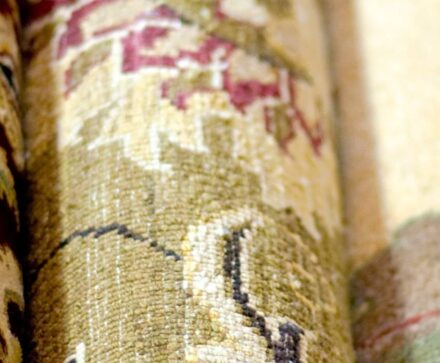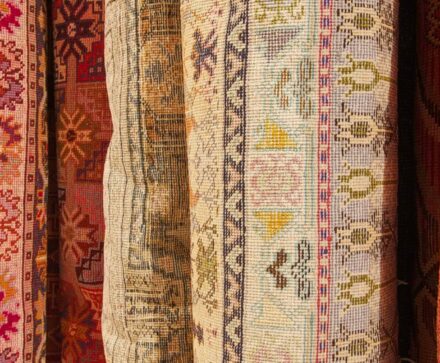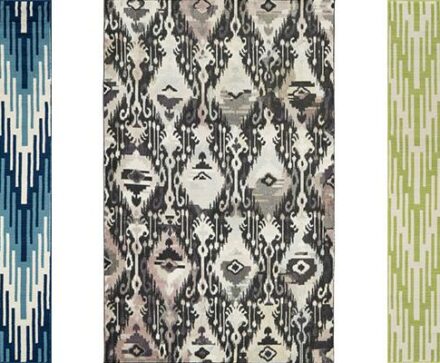How to Determine the Quality of an Oriental Rug

Oriental rugs come in many quality levels, from high-end to low-end. Sam Presnell, owner of The Rug Gallery, discusses how to spot the differences, and even touches on techniques that may not be spotted by the casual rug buyer. Listen or read more to learn about how to determine the quality of an Oriental rug.
John Maher: Welcome to The Rug Gallery with Sam Presnell. The Rug Gallery is an Oriental rug company and carpet store in Cincinnati, Ohio. I’m John Maher and I’m here with the owner of The Rug Gallery, Sam Presnell. Hi, Sam.
Sam Presnell: Hi, John.
John: Sam, today we’re talking about whether you can tell [if] an Oriental rug is high-end or not. What sets a high-end Oriental rug apart from lower-cost Oriental rugs?

Sam: Well, there’s all kinds of factors in there. The main factors are usually the wool quality or whatever material, maybe it’s silk or maybe it’s wool, maybe it’s a blended wool or maybe it’s a synthetic fiber as well, can also make a difference in the price.
Basically, the two ingredients that go into making a rug, one is usually the materials that are going into it, and then two would be the time of the weavers and the skill of the weavers that are going into it. You can imagine if you’re a weaver, there’s all kinds of qualities of weavers out there. Just like people. We’re all different, we all have certain skills.
Some people just have better skills at weaving and you can definitely see the differences from piece to piece because of that. There’s other reasons, one, that you have a very good wool or whatever you’re using, you spin it very, very tightly so it’s got a very nice quality to it. It’s not going to fall apart or shed or break down. Then, are you using vegetable dyes? That’s also very important. It can really almost double the price of the rug just by using that simple dye situation. Then if you are hand-spinning, hand-carding the wool, that’s very labor-intensive. It takes just as long to hand-card and hand-spin wool as it does to weave a rug sometimes.
People don’t realize how much time and energy goes into just doing that to the wool. Yes, there are certain characteristics of hand-spinning wool that makes a difference in the appearance of a rug, in that when you see those little subtleties of color. Because when you spin wool you can spin it — because it’s been done by hand on the wheel and you’re pulling back on the yarn, on these little strands of hair basically as you spin it, and there’s different densities too, and thicknesses to that wool. What happens is when you dye that particular handspun wool is that it accepts the dye differently in the looser parts of it — darker and deeper into the looser spun part of it and then the tighter spun part of it repels the dye stuffs and comes out a little lighter, so there’s a difference of … we call abrash or color change that we love about veg dyes. Those can make a big difference in price and make one high-end and one not.
Differences in Quality of Oriental Rugs
John : Okay. Are there really significant differences in quality between high-end and low-end Oriental rugs and where do you really see the differences in a final product?
Sam: Lot of times there is not and most times there is. Everything has an exception to it and I think what happens is some high-end rugs’ popularity, certain types of rugs or looks or styles come out like big shaggy rugs that we call Oushak rugs and things like that. They weren’t very high quality but they got very popular because of their color and design. They became very, very expensive, even though they weren’t … I would call them high-end rugs even though there weren’t that high of quality. So it’s not always the case, you know, it has to be a 1000 knots for square inch. I said, “Who cares if a rug is woven a 1000 knots a square inch other than a weaver and somebody who appreciates fine weaving?” Most time, it’s all about what the designs and colors are about. If it’s a 100 knots and it looks great, you will have to buy that one because, like art, it has to speak to your heart. I think that’s what a lot of times rug really, really is about — it’s about the art.
Weaving time
John: You mentioned that one of the things that goes into higher-end rugs is the time that it takes to weave that rug and the fineness of the weave. Talk a little bit about the amount of time that it takes for a weaver to weave a typical rug and the difference between the amount of time that might be put into a high-end rug.
Sam: Let’s say, for instance, you’re taking a rug and it’s got 25 knots per square inch. You take a post stamp and it’s about a square inch, you figure 25 little dots in there, that seems like a lot of weaving to it. You take that same one inch and you put 100 dots in there. Then you put 200 dots in there. The finer the weave, the more time it takes, the more skill it takes, the more interpretation of the color changes are happening, because you’ve got more color in a smaller area, can make a … so finest of the weave can make a difference as far as time to make.
An average rug, let’s just say you’re weaving at 120 or 140 knots per square inch, which would be a good quality rug today. I mean, if you’re taking that into a nine by 12, you could probably easily take 8 months to a year to weave that rug just with one person and you think about the time that it takes. Forget all the other stuff goes into it, just the weaving part of it. It can be very labor-intensive. Usually, when we weave a rug of any width, we add weavers about every three feet so on an average nine by 12, you’ll have at least three weavers side by side weaving that particular rug.
Somebody is weaving the center, someone reaching and weaving the borders out. Usually the borders are usually more complex than the centers and usually your better-skilled weavers are there so that’s the difference. But high-quality rugs you can pretty much rub your hand on them and if it’s a good wool, your fingers will shine. You won’t have a whole lot of fuzz. Looser-quality wool, you will rub your fingers over the top of that rug and little pieces of wool start falling out and that’s usually a good sign that the wool is not going to be a long-lasting wool for a high-quality rug.
Where to Buy a High-quality Oriental Rug
John: Where can you purchase a high-end Oriental rug if that’s what you really want to go for?
Sam: Well, I think those are probably mostly sold through high-end special rug retailers. I think you very seldom see that online. There was a few guys out there doing it, but quality is really a hard thing to judge online and I think that most people want to feel it and touch it. I think that plays into the vantage of this special retailer who collects them and enjoys them and can explain those differences.
John: Right. And like you said, you really do want to, well, literally in this case, not get your hands dirty, right? You want to rub your hand on the rug and have it come off clean and just see that that rug is really finely woven.
Sam: I like that play on words. That’s a good idea, John. [chuckling]
John: All right. Well, thanks again for speaking with me today, Sam. I appreciate it.
Sam: My pleasure. Thanks, John.
John: For more information about Sam, The Rug Gallery and Oriental rugs and carpets, visit [theruggallery.com] or call 513-793-9505. Make sure you catch the latest episodes by subscribing to this podcast on iTunes, and if you could give us a review on iTunes as well, we’d appreciate that. I’m John Maher, see you next time on The Rug Gallery.




